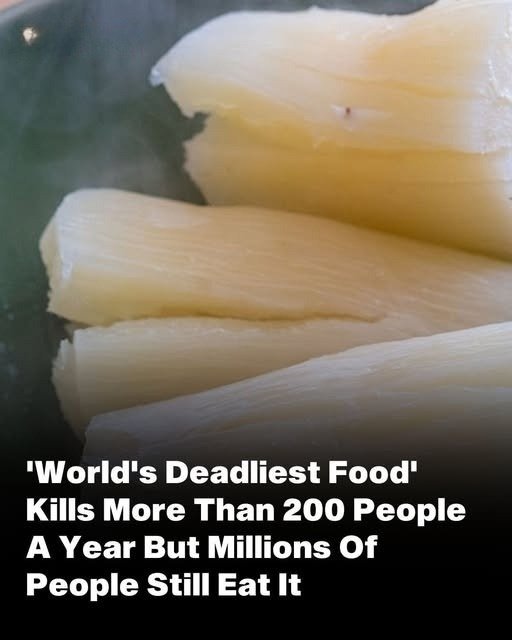Over 200 People Are Killed By The “World’s Deadliest Food” Every Year, But Almost 500 Million People Still Eat It

There’s no shortage of foods in the world that can satisfy your hunger quickly — rich, heavy meals, processed snacks, fast food items that are high in calories — but many of these are not meant for everyday consumption. They may fill you up, but they’re not typically part of the daily meals that people rely on to stay nourished and healthy.
Now, let’s shift our focus to real, everyday food — the kind that’s not just consumed occasionally but forms the foundation of daily nutrition for millions across the globe. We’re talking about food that plays an essential role in people’s survival, especially in regions where access to a wide variety of food options is limited. One such food, though lesser known in many Western households, is cassava.
Cassava, also known as manioc or yuca, is far more than just a plant. It’s a vital source of carbohydrates for hundreds of millions of people. Grown primarily in tropical and subtropical regions, this root vegetable is cultivated and consumed on a massive scale. In fact, it is estimated that hundreds of millions of tonnes of cassava are produced every year, and around 500 million people rely on it regularly as a key part of their diet.
Cassava grows naturally in South America, where it originated. Over the years, it has spread to Africa, Asia, and other parts of the world, becoming an agricultural staple in many developing countries due to its resilience, low cost, and ability to grow in poor soil conditions. In countries like Nigeria, Thailand, Brazil, and the Democratic Republic of Congo, cassava is a central food crop and a lifeline for countless communities.

Despite its reputation as a dependable and filling food source, cassava comes with a significant caveat: it can be dangerous if not properly prepared. While it’s a crucial component of the diet in many parts of the world, it contains naturally occurring compounds that can produce cyanide, a toxic substance. This means that if cassava is not processed correctly — such as through soaking, fermenting, drying, or cooking — it can lead to serious health problems, including poisoning and even death.
This dual nature of cassava — both life-sustaining and potentially harmful — makes it a fascinating and important food to understand. It’s a reminder that not all staples are inherently safe in their raw form, and traditional knowledge plays a crucial role in transforming a risky ingredient into a daily necessity.
As global food security becomes more urgent, crops like cassava gain even more importance. They offer a stable yield even during droughts and economic hardship, making them invaluable in fighting hunger and malnutrition. However, their use must be paired with education and proper food safety practices to ensure that what feeds millions does not also become a hidden danger.
So the next time you think about staple foods like rice, wheat, or corn, consider cassava too — a root that may not appear on your plate but plays a vital role on dinner tables around the world every single day.
